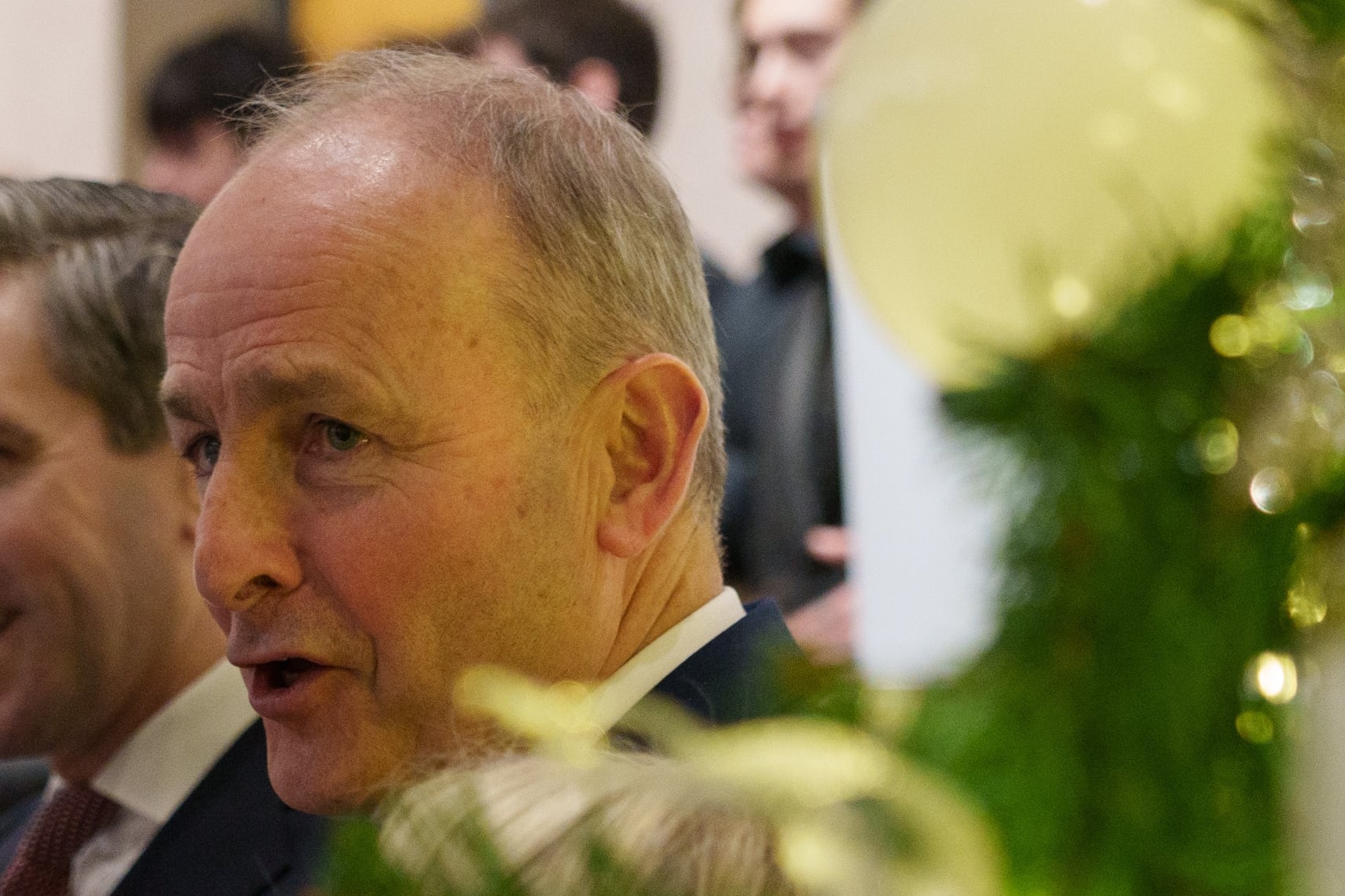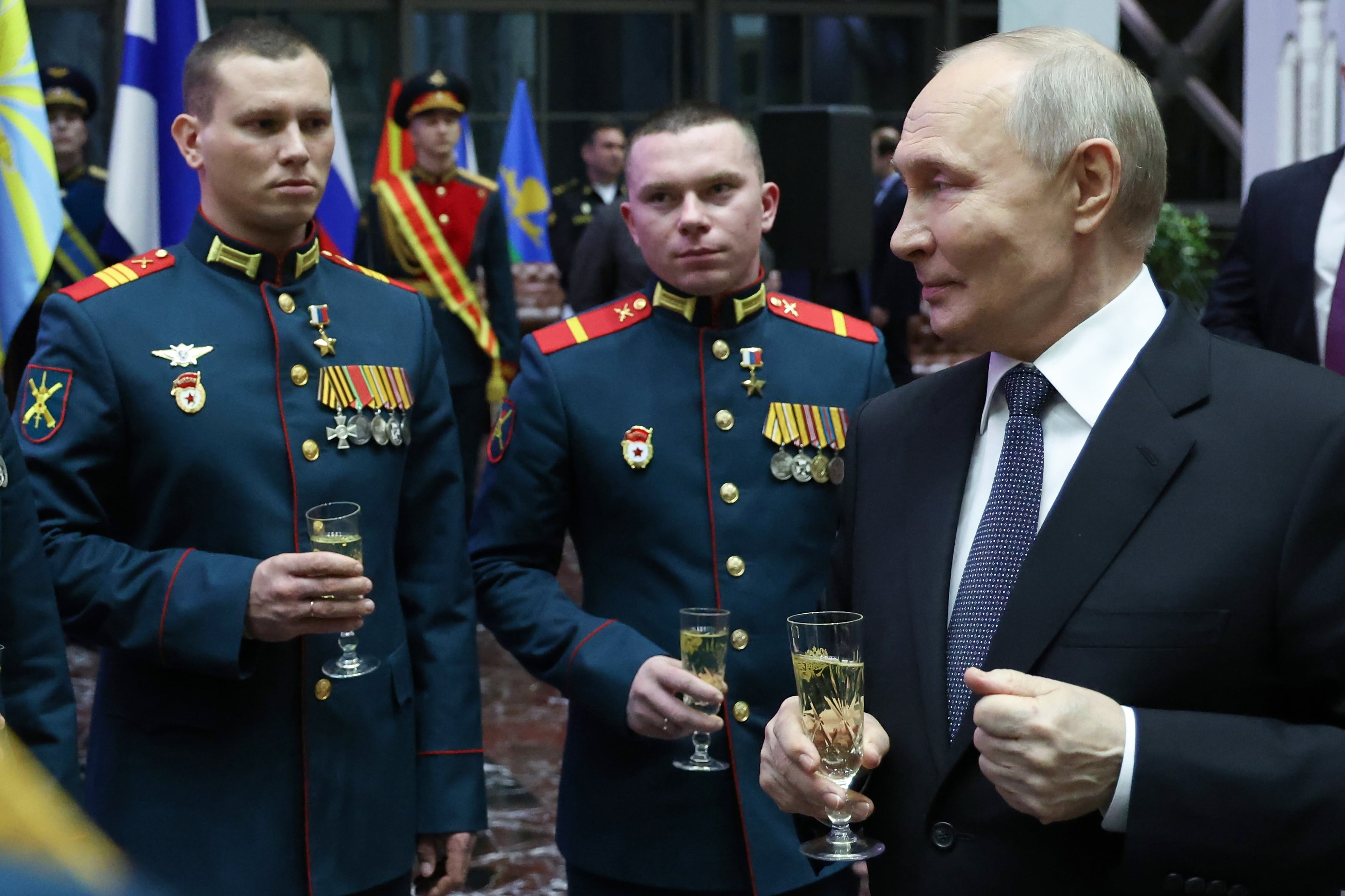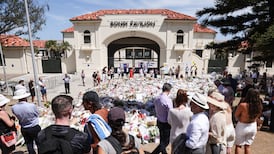After months of trench warfare and artillery bombardment, images from the Donbas in eastern Ukraine show burnt-out landscapes akin to those in Ypres and the Somme more than a century ago, pockmarked with shell holes and littered with bleak, skeletal trees. The exchange of fire is so intense that both Russia and Ukraine’s allies are struggling to manufacture ammunition fast enough to supply a conflict that has seen the return of industrial warfare to Europe.
The war has shaken up the global order, strengthening alliances between western powers and accelerating the division of the world into competing blocs and the risk of a new Cold War. But while the outcome of the war remains uncertain, so too do its long term consequences for everything from Europe’s security architecture to competition between US and China.
Within Ukraine the war is total, a struggle for survival in the face of almost daily Russian strikes at essential infrastructure in an attempt to destroy the viability of the state. An estimated 100,000 Ukrainian military personnel have been killed and almost 8 million civilians have fled abroad, while millions more have been displaced within the country.
Russia has suffered a similar number of military casualties to Ukraine but although the stakes for Moscow are high, they are not existential. For both Russia and Kyiv’s allies in the US and Europe, this war is a limited one, and both have been careful to avoid escalation beyond the territory of Ukraine.
READ MORE
The US and EU states have stopped short of supplying Ukraine with weapons to hit targets inside Russia, and insofar as Ukrainian forces have done so in recent weeks, it has been with improvised weaponry. For its part, Moscow has avoided striking the territory of Nato member-states.
Although the human toll of the war has been borne mostly by Ukrainians and Russians, the economic consequences have caused suffering across the world. Higher energy prices have left some Europeans facing a choice of whether to heat or eat on cold days, while a blockage of grain exports from Ukraine has created a food crisis for the world’s poorest.
The war has upended the politics and economics of energy and pushed Europe into a dramatic increase in military spending even as it has fallen back into the security embrace of the US. And it has propelled the EU into a new, eastward enlargement that could extend beyond Ukraine and has major implications for the direction and character of the union itself.
While it has reinforced the shared identity of the collective West, the war has also highlighted the limits of the lure of western values around the world and the scepticism of much of the global south about the West’s intentions. It has soured the relationship between the EU and China, which has refused to condemn Russia’s actions or to show any cooling of its relations with Moscow.
[ EU at odds over how to balance Russian sanctions and world food securityOpens in new window ]
The early days of the war took most western capitals by surprise in two respects: the scale of Vladimir Putin’s ambitions in attempting to take Kyiv, and his failure to do so within days. US intelligence reported before the invasion that Putin was planning to advance through the entire country, but most political leaders doubted he would move beyond the eastern provinces.
Less than three weeks before the start of the conflict, the chairman of the US joint chiefs of staff, Mark Milley, told a congressional committee that Kyiv was likely to fall within 72 hours of a full-scale Russian invasion. Putin’s failure to take Kyiv and Volodymyr Zelenskiy’s physical courage in refusing to accept a safe haven in Poland were decisive in shaping the popular response to the conflict, particularly in Europe.
Europe’s political leaders understood immediately the importance of Russia’s action and its implications for their own security. German chancellor Olaf Scholz told the Bundestag on February 27th that he was creating a €100 billion fund to beef up the military.
“Our greatest strength is our alliances. It is to them that we owe the great fortune our country has enjoyed for over 30 years: living in a unified country, in prosperity and at peace with our neighbours,” he said.
“If we want the last 30 years to be more than a historical exception, then we must do everything we can to maintain the cohesion of the European Union, the strength of Nato, to forge even closer relations with our friends, our partners and all those who share our convictions worldwide.”
Nato has moved away from its post-Cold War focus on rapid response to diverse crises and back towards its original purpose as an alliance against Russia
Other European states were also reflecting on what the invasion meant for their own security and on the importance of US military power in deterring further Russian aggression in Europe. Sweden and Finland applied to join Nato, leaving Ireland, Austria, Malta and Cyprus as the only EU member-states outside the US-led alliance.
The accession of Finland and Sweden, which has yet to be ratified by Hungary and Turkey, is strategically significant for Nato, extending its border with Russia by more than 800 miles. It will leave the Baltic Sea surrounded by Nato member-states, apart from the Russian enclave of Kaliningrad, making the defence of Estonia, Latvia and Lithuania much easier.
Sweden and Finland were formally invited to join Nato at the alliance’s summit in Madrid at the end of June, which also adopted a new Strategic Concept that foresees a more aggressive stance towards China as well as Russia. Since Russia’s invasion of Crimea in 2014, Nato has moved away from its post-Cold War focus on rapid response to diverse crises and back towards its original purpose as an alliance against Russia.
But even as Nato deployed multinational forces to the Baltic states, in breach of the 1997 Nato-Russia Founding Act, it held back from designating Russia a “threat”. That changed at Madrid, where the Nato leaders also declared that “the People’s Republic of China’s [PRC’s] stated ambitions and coercive policies” challenge Nato’s interests, security and values.
“The PRC employs a broad range of political, economic and military tools to increase its global footprint and project power, while remaining opaque about its strategy, intentions and military build-up. The PRC’s malicious hybrid and cyber operations and its confrontational rhetoric and disinformation target Allies and harm Alliance security. The PRC seeks to control key technological and industrial sectors, critical infrastructure, and strategic materials and supply chains,” the Nato leaders said.
“It uses its economic leverage to create strategic dependencies and enhance its influence. It strives to subvert the rules-based international order, including in the space, cyber and maritime domains. The deepening strategic partnership between the People’s Republic of China and the Russian Federation and their mutually reinforcing attempts to undercut the rules-based international order run counter to our values and interests.”
The passage on China reflects part of the price the US is seeking from its European allies in return for the security guarantee that the Ukraine war has made more valuable than before. It also serves as a reminder that US foreign policy, which the Biden administration characterises grandly as a confrontation between democracies and autocracies, is increasingly focused on competition with China.
The solidarity shown by the EU towards Ukraine took the form of economic assistance, shelter for refugees and economic sanctions against Russia. But the EU also offered military support through the so-called European Peace Facility, which delivered €6 billion in military equipment from the member-states to Ukraine.
The European External Action Service (EEAS) hosted a clearing house to streamline the sourcing and delivery of weapons in accordance with the requirements of the Ukrainian war effort. Ireland and two other member-states opted out of the provision of lethal military supplies but they contributed to the delivery of non-lethal military equipment to Ukraine.
China has been cultivating deeper diplomatic and economic ties in the Middle East, where Gulf states have not been deterred by Beijing’s friendly relations with Iran
Europe’s decision to reduce its dependency on Russian oil and gas left it more reliant on liquefied natural gas (LNG) from the US, Qatar and a few other sources. Europe has paid a much higher economic price than the US, both in soaring energy prices and in the loss of Russia as an export market due to sanctions.
If the Europeans were quick to fall into lockstep with the US after the invasion, some Asian, African and Latin American countries were more reluctant. Although most countries supported a UN resolution condemning Russia, those who abstained included not only China but India, South Africa and Brazil.
Europeans warned India that its failure to back the western position on Ukraine could diminish global support for New Delhi in its disputes with China. But India’s foreign minister Subrahmanyam Jaishankar pointed out that his country was capable of managing its relationship with China without western help.
![Indian foreign minister Subrahmanyam Jaishankar: 'The Chinese do not need a precedent somewhere else on how to engage us [India] or not engage us or be difficult with us or not be difficult with us.' Photograph: Maxim Shipenkov/AFP/Getty](https://www.irishtimes.com/resizer/v2/IWKOZ5G5UZJ3X6TM4HFLVE4OKM.jpg?auth=a214958eccf6660ed139fa591bb65e2663f26b2892a9de4b0bdd3b94d43d0751&width=800&height=548)
“Somewhere Europe has to grow out of the mindset that Europe’s problems are the world’s problems but the world’s problems are not Europe’s problems. That if it is you, it’s yours, if it is me it is ours. I see reflections of that,” he told a conference in the Slovak capital of Bratislava.
“There is a linkage today which is being made. A linkage between China and India and what’s happening in Ukraine. China and India happened way before anything happened in Ukraine. The Chinese do not need a precedent somewhere else on how to engage us or not engage us or be difficult with us or not be difficult with us.”
For its part, China has walked a careful path, offering moral support to Moscow and buying its energy at discounted prices but declining to send weapons to Russia or to breach western sanctions. But the war has led to speculation about its role as a template for a future conflict over Taiwan, with the prospect of western powers providing arms, intelligence and military training to Taipei to repel an invasion from the Chinese mainland.
Such speculation causes alarm in Beijing, where western actions over Ukraine are closely monitored for their possible implications for the future. The freezing of Russia’s foreign currency reserves, which some western politicians suggest should be appropriated to pay for the reconstruction of Ukraine, has ominous implications for a country such as China, which has much bigger dollar reserves.
For the US, the risk is not just that it will overplay its hand but that it may have shown it too soon, giving China time to prepare. Beijing is already taking steps to encourage more of its trading partners to accept payment in its own currency, the yuan, rather than in dollars.
At the same time, China has been cultivating deeper diplomatic and economic ties in the Middle East, where Gulf states have not been deterred by Beijing’s friendly relations with Iran. And if the US can strengthen its alliances with countries that share its values and ideology, China is creating an alternative friendship group with states that regard the practice of democracy and human rights as internal matters that should not be subject to international scrutiny.
Ukraine will need security guarantees if there is a peace agreement and Russia will require assurances about its own security
Washington’s attempt to hobble China’s economic and technological development by banning the sale of sophisticated semiconductors has met resistance in Europe. If the US wants to decouple from China economically, the EU is not ready to follow suit and the Chinese market is all the more important to Europe following the loss of Russia’s.
The first few months of 2023 are likely to see more friction between the US and Europe when the EU responds to Washington’s Inflation Reduction Act (IRA), which promises to support US industry with hundreds of billions of dollars in subsidies. The legislation also threatens to cut EU-based companies out of competition for contracts with new Made in America requirements.
Nobody can predict the course of the war in Ukraine but there is a consensus in western capitals that next spring will be crucial in determining its outcome. If neither side succeeds in changing the battlefield significantly, pressure will grow for a ceasefire and peace negotiations.
Any settlement is likely to be complicated, incomplete and unsatisfactory for both sides, with the resolution of territorial issues postponed while the conflict is frozen. But Ukraine will need security guarantees if there is a peace agreement and Russia will require assurances about its own security.
Such peace talks could involve a broader negotiation of Europe’s security order, including arms reduction and possibly revisiting the question of Nato’s relationship with Russia. Such negotiations will raise moral questions for Ukraine and its allies and strategic choices for Europe about its relationships with Russia, the US and the rest of the world.
!['If the Europeans were quick to fall into lockstep with the US after the invasion [of Ukraine], some Asian, African and Latin American countries were more reluctant.' Photograph: Samxmeg](https://www.irishtimes.com/resizer/v2/QCIE4ZYLH5A6NCF247WKV2TTTE.jpg?auth=7f97f8d631ef1b73d93d7d98deb26e2ecb3cabff3ceb32c09b4e1a84e4605b7f&smart=true&width=1024&height=683)













